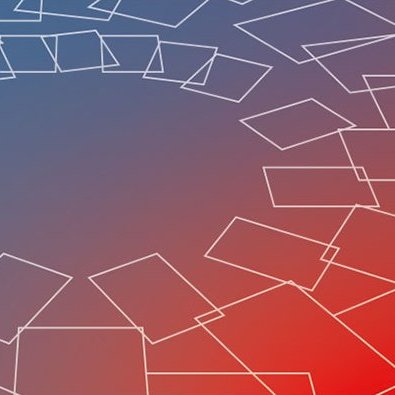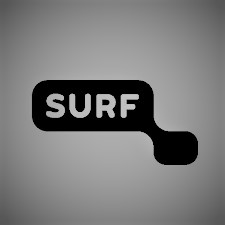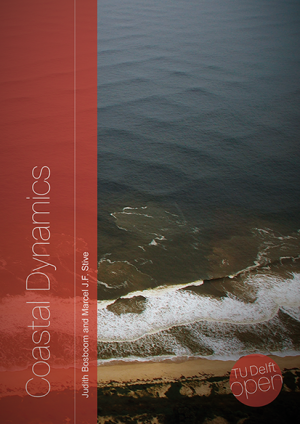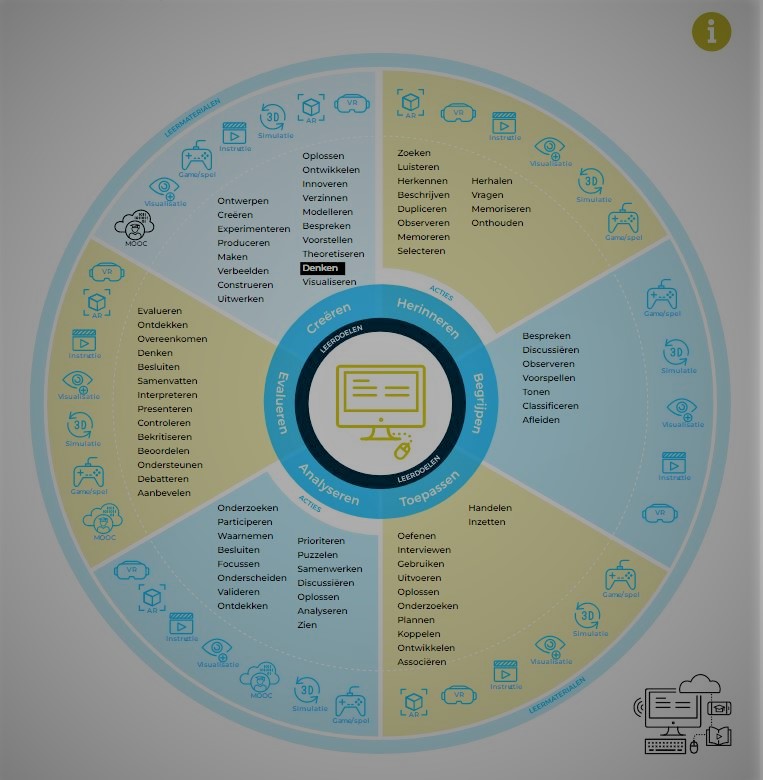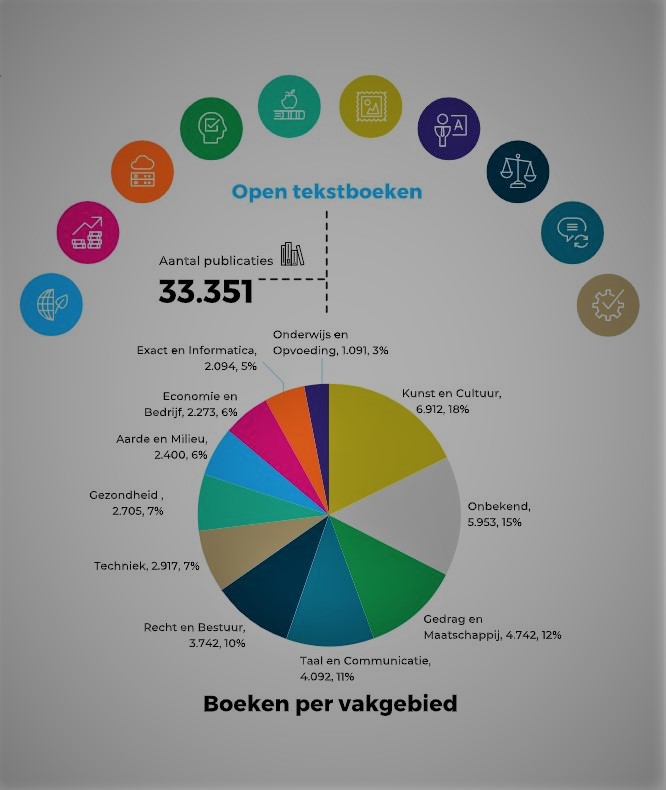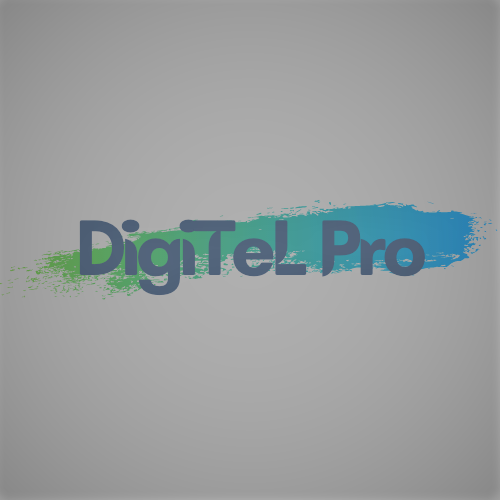Open Education
What is Open Education?
Open Education is a general term for applying open principles to your teaching. In particular, this includes:
- Finding, adopting, reusing and publishing open educational resources
- Designing learning activities that stimulate the creation, reuse and publication of such resources with students and teachers
- Enabling students to feel more involved in their education by helping them connect to their professional work field, add value to the knowledge domain in which they study, engage in more active ways with their course materials and collect a mix of learning resources that is personalized to their needs.
Open Education Week - Get involved!
During Open Education Week, the TU Delft is hosting several events where we connect open education to other important trends in education, like online learning, blended learning and inclusivity. We kindly invite you to join one or more of these sessions to share your experiences. We also invite you to check out several interesting other sessions from outside of the university and we post a number of highlights from the many Open Education activities that are done at TU Delft.
-
Open Education Week is an annual event hosted by Open Education Global, where we raise local awareness of open education by highlighting open education innovations and successes worldwide.Open educators, practitioners, advocates, administrators, policymakers, and students use this week every year to spread the word about the benefits of open education practices and resources. They host events and activities to raise awareness and inspire others, share their favourite assets, engage in conversations with fellow participants in the #oeweek plaza on OEG Connect, and promote #oeweek within their community.
For us at TU Delft, we see the OE Week as a prime opportunity to inspire new open education advocates and celebrate and highlight our best practices.
Open Education
I want to learn more about...
> Open Science at TU Delft
> Open Education at TU Delft
> TU Delft Library
OPEN TEXTBOOK OF THE DAY
-
In 2020, Sander Konijnenberg, Aurèle Adam and Paul Urbach started with publishing their lecture notes for optics as an open textbook. A year later, they published BSc Optics with TU Delft Open Publishing.The initial goal for the authors was to offer a simple book to their students, covering their course, explains Aurèle. “When the book came to maturity, it was obvious to us that it could be used by more people than just our students. We had found that there was no open book available on the topic. For us as lecturers, it is very useful that we have a versatile and a dynamic book at our disposal. For example, because we can make several editions, we can ensure that our students can work with up to date literature.” The possibility of having the book printed at a low cost was also a nice addition. “Textbook that are published by a commercial publisher are typically very expensive. By having a free electronic version and a cheap print option, we hope the book can also be used by less fortunate universities and students as a basis to learn about the principal of optics.”
The process of making their materials fit for publication was not always easy. The main issue Aurèle found was with the figures they used. “Originally we didn’t bother much with scanning figures or pictures from other sources. When we decided to make an open textbook, we had to change most of the figures and readapt, so that we did not violate any copyright. We do feel like we were able to master the design software, to get the high quality images that we wanted. In the end, copying existing figures did help us move forward with the “writing” part, but it took us quite long time to have a publishable results with our own figures without copyright issues”.
So how are students perceiving the book, now that it is published? Aurèle noticed that students already gave them lots of feedback well before the materials were published as an open textbook. “Students continued to give us feedback when we showed them the first edition of this book. Based on their feedback we have incorporated many changes, most notably the addition of colour (we have two versions of the book, one with colour figures, one in black and white). The great thing about the publishing service with the library is that we can simply deliver a new edition every year and they publish the updated version for us. We are planning to do that for at least the next few years.”
One of the other useful skills that the authors learned in the process was how to create the clarity you need to structure your book, for the students to see what is important and what they should know. “Having to think about how someone might read our book is an interesting exercise. This is something we can also consider when we design our lectures for the students.”
BSc Optics is an open textbook that is available to download for free on the TU Delft Open Textbook website. Here you can also order print copies.
it is very useful that we have a versatile and a dynamic book at our disposal. For example, because we can make several editions, we can ensure that our students can work with up to date literature.” The possibility of having the book printed at a low cost was also a nice addition. “Textbook that are published by a commercial publisher are typically very expensive. By having a free electronic version and a cheap print option, we hope the book can also be used by less fortunate universities and students as a basis to learn about the principal of optics.”The process of making their materials fit for publication was not always easy. The main issue Aurèle found was with the figures they used. “Originally we didn’t bother much with scanning figures or pictures from other sources. When we decided to make an open textbook, we had to change most of the figures and readapt, so that we did not violate any copyright. We do feel like we were able to master the design software, to get the high quality images that we wanted. In the end, copying existing figures did help us move forward with the “writing” part, but it took us quite long time to have a publishable results with our own figures without copyright issues”.
So how are students perceiving the book, now that it is published? Aurèle noticed that students already gave them lots of feedback well before the materials were published as an open textbook. “Students continued to give us feedback when we showed them the first edition of this book. Based on their feedback we have incorporated many changes, most notably the addition of colour (we have two versions of the book, one with colour figures, one in black and white). The great thing about the publishing service with the library is that we can simply deliver a new edition every year and they publish the updated version for us. We are planning to do that for at least the next few years.”
One of the other useful skills that the authors learned in the process was how to create the clarity you need to structure your book, for the students to see what is important and what they should know. “Having to think about how someone might read our book is an interesting exercise. This is something we can also consider when we design our lectures for the students.”
BSc Optics is an open textbook that is available to download for free on the TU Delft Open Textbook website. Here you can also order print copies.
-
In 2021, Jill Slinger (TPM) decided to take the materials from the MOOC ‘Building with Nature and Beyond’ and turn it into an open textbook. She hired a professional designer to help her out with the design of the book and worked with the TU Delft Library to publish Building with Nature and Beyond in December 2021.Jill’s motivation for starting this project was partly to help out the community that is behind her two MOOCs. She knew that a lot of people within the field would be very happy to have a book like this available with an open license. Especially in Indonesia and African countries, where it tends to be more difficult to get physical copies of western textbooks for a decent price. But actually there was also a more pragmatic reason for her to publish the textbook. “I was just getting too many questions from people about the MOOC and the subjects within the course”, explains Jill. “When the course itself runs, it is no surprise that you get a lot of questions from participants. But I was still getting lots of questions after the course ended as well. I simply did not have the time to answer all of them. So I wanted to make sure I had something that I could direct people to, so that they become less dependent on me”.
Jill had an ambitious plan for her book, because she wanted it to have some of the interactivity that you also find within the MOOC. So she hired Martijn Vos as a designer, to help her make the electronic version of the book interactive. “In an online course, you can do quizzes, where people can test their knowledge and get feedback on their answers. I wanted to include that concept in the open textbook as well. Martijn was a great help with that. He converted all of the quizzes into questions at the end of each chapter, with multiple choice answers. You can now click on the answers in the book, and see whether you are correct and get some feedback. In addition, Martijn also embedded lots of videos from the MOOC into the textbook. In the electronic version, you can just click and watch. In the printed version however, we included QR-codes that link directly to the video, so people can use their phone or tablet as a second screen.”
The most challenging part of getting this book together, was achieving consistency in the graphics, but also getting and specifying copyright permissions for all of the images in the book. This turned out to be a lot of work and a meticulous job. “My advice to anyone who is considering to write an open textbook: start with getting your copyright permissions in order. Luckily, the team at the TU Delft Library have knowledgeable copyright experts that gave us invaluable advice on all of our copyright issues. And they also gave us lots of encouragement, which was really nice because you need that support if you want to finish something this big. And having a graphic designer to help you with the design of the book also helps a lot, I am incredibly happy with all of the work Martijn did”.
So what does Jill take away from this project, now that it is finished? “I’ve realized that, contrary to research publications, educational literature can have a much broader, much more diverse impact on my community. I find out that people are interested in my MOOC and my book that I haven’t ever met before and that I would have never reached, if these resources did not exist. However, I’ve also realized that if someone has an open textbook at their disposal, it does not automatically mean that they can use it. This is something you can help people with as well actually, if you really want them to be able to use your book. When I handed over a course in the past to a colleague, I always wrote an instruction document for them, so they knew how to do the course. Maybe I can and should do the same now with this textbook.”
Building with Nature and Beyond is an open textbook that is available to download for free on the TU Delft Open Textbook website. Here you can also order print copies.
-
Recently Alexcander Koutamanis published the second edition of his open textbook Building Information. Both the first and the second edition were publish through the TU Delft Open Textbook publishing service.When asked about his motivation to publish an open textbook, Alexander explains he has multiple reasons. “The primary motivation for writing a textbook was that a textbook on the particular subject did not exist yet. Over the years teaching my course, I felt I was at a point where I was capable of describing the subject to any student. That made me feel assured enough to attempt writing a textbook. The reason for deciding on an open textbook was the abominably high prices of textbooks in general. It is a lucrative but unfair business that I feel needs to be terminated. That is the spirit of the 21st century: just look how authoritative and up-to-date online sources like Wikipedia have become in a relatively short time.”
Alexander experienced that writing a textbook is different to writing a scientific paper or book. “One needs to stay within a rather tight bandwidth of knowledge that meets expectations concerning the level of the audience and the outcomes of the course. This includes explanations of quite a lot of background stuff in the shortest possible way.” Alexander learned that having taught a course on the subject for a number of years and knowing not only what learners already know but also what might puzzle them seems like a prerequisite to writing a textbook.
So what has changed in his teaching now that he has an open textbook at his disposal? “The main change is that the structure and content of the textbook are relaxing: if I miss something in the lectures or workshops, I can always fall back to asking the students to study a chapter and do some exercises, which we then discuss the next time or even online. It is truly liberating to me as a teacher and a safety net for the students.”
Having written the textbook just a year before the COVID-19 pandemic meant that for two consecutive years Alexander could rely on it in the thankless business of improvised online teaching. “I did not have to desperately develop means for the course. Quite the opposite, I had the feeling that the better students could achieve a lot with just the textbook.”When asked about the open textbook Alexander’s students were very enthusiastic. Zisis believes that using a book written by the teacher has contributed to having a consistent reading material throughout the course. “Because it is written so well in alignment with the progress of the course, it was easy to follow. And it was nice that we could ask the actual author for any specific questions about the content. While it may seem that a book written by the teacher may lack of a pluralistic perspective, the technical lens of the course, several references for further research and the critical reflection about the content made me feel that that was not the case. The book was not very different from the books of other courses in terms of scientific level, as most of the courses were based in high quality reading references. I personally prefer to work with electronic books, as it is more practical and economical, so the electronic version of the book, perfectly suited my preferences.”
Building Information - Representation and Management: Principles and Foundations for the Digital Era is an open textbook that is available to download for free on the TU Delft Open Textbook website. Here you can also order print copies.
-
In August 2018, Stefan Hugtenburg and Neil Yorke-Smith (EEMCS) published the first official TU Delft Open Textbook, with the TU Delft Library. Since then, their textbook titled Delftse Foundations of Computation has been downloaded more than 60.000 times and has been used within their course for several years.“We wanted to find a fix for the high price that students were paying for the textbook used previously in the course” explains Neil. “This is an introductory maths-for-CS course: there must be quality open access materials available, we thought.”
Finding the right book proved to be difficult initially. First Neil and Stefan surveyed existing open access textbooks. “None of the books that we found had the content and level that exactly fitted the course. So at some point we took one open textbook we liked, called Foundations of Computation. We decided to remix it with other open material and our own, to make a textbook just right for Computation Science students at TU Delft. The process was not that difficult, although it did take a bit of time to get everything ready. We had a talented student design the book's front cover, and the expertise of the team at TU Delft's Library made publishing easy.”
Stefan and Neil have found that having their own textbook dedicated to the course really helps them to know exactly what is in the book. “We can tell our students: read this section before the next lecture, knowing it exactly matches what we want to teach. We also tie in content like short videos and quizzes on the TU Delft online learning platform (currently Brightspace) with sections of the book, using QR codes.”
The students regularly give feedback about the book, most often asking for solutions to more exercises. “We do not want to just simply give them these answers, because we want to challenge them to think independently and work together. So to them we say: go create the solutions with your peers, and we'll add them to an open-access solutions repository for the book. Students also spot more typos than we ever thought!”
“In the process we learned that there are lots of excellent open access materials available, and that it is not difficult to use and customise them. Perhaps some people have already remixed our textbook! We wonder whether they will take out the jokes about Dutch stroopwafels.”
The fact that the book is available electronically as an open textbook has provided the team with an unexpected added value, adds Stefan. “Our programme has a numerus fixus with a selection procedure. Reasoning & Logic is a part of the selection tests. As part of these selection tests we have candidates use our book, by studying a single chapter. This way we can effectively asses prospective students, without them needing to purchase an expensive textbook. Moreover, our bachelor programme becomes more transparent, because high school students can more easily see what kind of things they will learn.”
Delftse Foundations of Computation is an open textbook that is available to download for free on the TU Delft Open Textbook website. Here you can also order print copies.
-
In 2021, together with his colleagues Hans van der Marel, René Reudink and Freek van Leijen, Christian Tiberius (Geoscience & Remote Sensing, CEG) decided he wanted to publish an academic textbook on Surveying and Mapping. “This textbook was actually already about eight years in the making, ever since we started teaching the third year course ‘Surveying and Mapping for the Geosciences bachelor program.” he explains. “Over the years we have worked on a total of six readers that we handed out to students at the start of the course. In all those years we never found any existing educational literature that quite covered what we wanted to teach. The opportunity to publish an open textbook with the TU Delft Library had already presented itself in 2019, and I always remembered it as an option whenever we felt like we were ready to combine our readers into an academic textbook.”Most of the existing literature is limited to technical manuals, on how to operate professional surveying equipment and tools. The underlying scientific principles, but also working with the mathematical models behind the measurements are not part of these manuals. This is the unique value that this textbook could bring to their discipline. “We were quite excited by the publication service presented by the Library. We had not considered to publish an open textbook, but when first hearing about it at a Meat & Eat hosted by the Teaching Lab, it made a lot of sense. It is important to us that students can have access to the book at all times, during their studies but also when they move on to their professional career. And if we would bring this work to a commercial publisher, it would probably have resulted in a book that would cost 100-120 euros, and that would not have been available electronically for free. Our colleagues in the field are also very interested in an open textbook that they can use as a reference work in their jobs. We feel it is our responsibility as a knowledge institute to offer up-to-date materials.”
Christian and his co-authors experienced that writing a textbook is really a kind of adventure. They worked particularly well together, because Christian worked as the principal editor and the others could focus on authoring their parts of the book. And more importantly, they have known each other for years. So when the time came to kill their darlings, they felt like they could give each other hard feedback when necessary. Christian: “The key added value of a textbook above a set of readers for us was that a textbook is a consistent work, with a single style, notation and terminology. By working together on this and discussing that amongst each other, we were able to make a textbook that is really more than the sum of its parts. Because the readers had already been shared with students in the last years, we were also able to test our material and get valuable feedback from our target audience. You could say that this open textbook in that sense is a collaboration with students, who have provided us with feedback and practical examples, for instance from their internships.”
When asked what Christian learned from writing an open textbook, he responds decisively. “The most labour intensive activity in the whole process was definitely clearing all of our images and visual materials from copyright issues. We wanted to use a lot of pictures, but for that you are really dependent on the willingness of others to share them in an open publication. Our experiences with contacting the owners of such materials was good. Actually all of them were happy to share their work for our textbook, although we had to send multiple reminders and call them on the phone in order to get a reaction. We considered to hire a student to do the work for us, but we noticed that in the end it works most effectively if you use your personal network to get the images that you need. I think our most important realisation has been that we also have to set a good example to our students regarding the reuse of someone else’s work. We learned a lot about this when writing this book.”
Surveying and Mapping is an open textbook that is available to download for free on the TU Delft Open Textbook website. Here you can also order print copies.
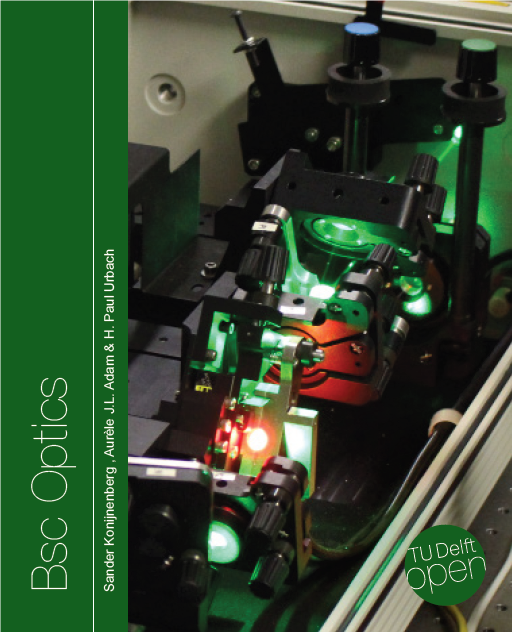
RESOURCE: Open Educational Resources
Open Educational Resources (OER) are teaching and learning materials that you may freely use and reuse at no cost, and without needing to ask permission. Unlike copyrighted resources, OER have been authored or created by an individual or organization that chooses to retain few, if any, ownership rights.In some cases, that means you can download a resource and share it with colleagues and students. In other cases, you may be able to download a resource, edit it in some way, and then re-post it as a remixed work. How do you know your options? OER often have a Creative Commons license or other permission to let you know how the material may be used, reused, adapted, and shared.” The TU Delft Library has made an extensive inventory of sources of OER that are at your disposal.
SERVICE: Publish an open textbook
TU Delft Open Textbooks is a platform that contains freely accessible textbooks produced by TU Delft teachers and used in bachelor and master courses at TU Delft. You can find the latest publications on the homepage, or check out the full catalog. Currently we have 18 published titles from all of our faculties and we are still looking for authors who are interested in published a new work.
If you are interested in publishing your own TU Delft Open Textbook, you can learn about the publishing process at on the Information for authors page or contact the TU Delft Library Education Support team at educationsupport-lib@tudelft.nl. Open Textbook publishing is a service that is provided by TU Delft Library to TU Delft teaching staff
COMPETITION: IMAGining Energy transition - Open Photo Competition
To celebrate Open Education Week 2022 and TU Delft’s 180th anniversary you are invited to participate by submitting an image of what a sustainable energy transition looks like to you.
To be in with a chance of winning one of five €20 vouchers, submit at least one photograph that captures what a sustainable energy transition looks like to you: the facts, the challenges, the drivers; your fears, your hopes, your inspiration, your research, your contribution! Your submissions will be uploaded to We Like Sharing, a bank of images created by TU Delft staff and students that is ‘open’: visible to everyone and publicly searchable. The deadline to submit your photographs is 13 MARCH at 23.55 hours. Submit today!
Competition is open to all TU Delft employees, students and alumni. Winners will be notified w/c 28 March. They can choose to redeem their €20 voucher at one of the following: Paagman Books, De Nationale Bioscoopbon, Praxis.nl, and Suiker en Kaneel Chocolate Chip Cookies. We look forward to receiving your entry - Good luck!
READING: Literature and sources on Open Education
Be informed about Open Education. There are several sources of information about Open Education, ranging from academic research publications, to practical tools and blogs. We have made an overview below.


